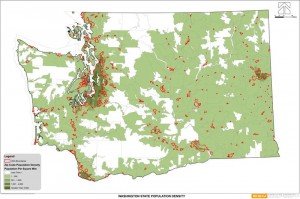 Building on her prodigious project experience with LEED for Neighborhood Development, WT principal and sustainability evangelist Catherine Benotto was asked by the Cascadia Green Building Council to assist the USGBC in the development of the LEED ND Regional Credits by managing this work for Washington State and coordinating it with the Pacific Regional Task Force, which included her counterparts in Alaska, Oregon, California and Hawaii.
Building on her prodigious project experience with LEED for Neighborhood Development, WT principal and sustainability evangelist Catherine Benotto was asked by the Cascadia Green Building Council to assist the USGBC in the development of the LEED ND Regional Credits by managing this work for Washington State and coordinating it with the Pacific Regional Task Force, which included her counterparts in Alaska, Oregon, California and Hawaii.
Location may be the mantra of real estate, but it is also a fundamental ingredient of sustainable communities – in the LEED ND program where you build a neighborhood is as important as how you build. In an effort to tailor the ND program more to a project’s locale, regional priority credits were developed. A Regional Priority credit awards an extra point to six credits in a LEED ND rating system that have been identified as having a significant benefit for a particular region. A project team may earn up to four Regional Priority credits. If a project earns one of those credits, often at a particular threshold, a Regional Priority credit, and therefore an additional point, is automatically earned within the system. –US Green Building Council
As the ND program addresses both the pattern of development as well as environmental criteria, Catherine’s handpicked working group began by assessing both Washington’s climatic zones as well as density and relating ND credit priorities to both criteria. In the end, six zones were developed: high/urban, medium/suburban and low/rural density areas were defined for each of the two primary climatic zones: eastern high desert and western temperate zones. The key issues being addressed were different for each zone. For example, in high density, temperate areas like Seattle, credits that supported the following issues were selected as highest priority:
- Reductions of Vehicle Miles Traveled (VMT) to reduce carbon emission
- Provisions for affordable housing and housing diversity in urban centers
- Support for local food production
- Provisions for open space amenities to make higher density livable and desirable
And at the other end of the spectrum, within low density areas in eastern high desert areas, credits that supported these issues were selected for highest priority:
- Water Conservation
- Need to plan development in close proximity to existing resources and services
- Reduction of automobile dependence/emphasis and related VMT and carbon emission
- Create compact neighborhoods
- Night sky access and reduction of light pollution
The Pacific Regions’ work is under review by the LEED ND Core Committee and is expected to roll out this spring. Catherine would like to thank Ginger Garff, Jeremy Febus and Nora Daley-Peng for their volunteer assistance with this work.